Sost and Passu: North of Hunza Valley
Some people say that the area north of the Hunza Valley, including the Cathedral Range, is the closest thing to heaven on Earth. They might just be right. I visited this magical area in July 2010.
I woke in Sost, a small village about halfway between Gilgit and the Chinese border, after the long drive down from Kashgar in western China. With a couple of friends I walked the streets, looking through the shops, photographing the imposing craggy summits which towered above Sost like natural skyscrapers. Here, rather than snow-capped mountains, the summits were jagged rocky spires thrust skywards by year of seismic activity, and the snow seemed to dust the peaks then collect in grooves in the rocks, forming ribbons which twisted down the slopes.
We sipped milky chai on the motel’s rooftop terrace as we watched the day turn darker, the afternoon monsoon rains folded in through the mountains and a misty haze enveloped the town before the heavens opened, and the streets of Sost were amess with men in their shalwar kameez (traditional dress-shirts) scurrying around, finishing up their business before taking cover. One of my Pakistani friends played his guitar (we asked him to sing us a bridge from the movie Kal Ho Na Ho) and in the evening the some Korean tourists joined us for fresh watermelon. My friend and I took a walk around Sost’s drab bazaar as the looming mountains carved up the drifts of clouds pouring in. We also took a stroll to the river, and over the suspension bridge which led to the community on the other side. Khoda-abad (City of God) was a tiny settlement of only a couple of families,
separated by mud and stone walls, wheat plantations, apricot orchards, cherry trees and sunflowers. The women only loosely covered their heads – their history predates Islam’s arrival in Pakistan. The local language is Shina, a distant relative of Greek, left over from when Alexander the Great swept through these parts. A couple of friendly children led us around their pretty village where quaint laneways were shaded by fruit trees, all of it guarded by the majestic peak behind it.
On Monday morning we ate breakfast in the motel cafe – parathas (oily bread-pancakes), omelette and chai. A picture of a joyous-looking Benazir Bhutto hung on the wall, watching over us. The day was spent chatting with an ultra-spiritual local musician, fond of a joint or three, who believed that nirvana could be reached through music. My friend and I also stalked a rude, repulsive Chinese guy who was staying at our motel, and who, among other antisocial behaviour, insisted on loudly clearing his throat outside our hotel room at seven each morning. We relaxed on the terrace at night, counting falling stars in the crystal clear night sky.
Leaving towards Gilgit the next day, the Karakoram Highway twisted and turned its way over the brutal geology, and the bus seat nearly divided my backside into three, as we enjoyed the picture-postcard panoramas of the Cathedral Range near Passu. We took a boat over an artificial lake which was created by a landslide which plugged the Hunza River in January 2010. A boat as a means of transport at 2500 metres in the Karakoram Range was easily the trippiest thing I’ve done since having dinner on a tram restaurant last December. The pockets of civilisation quickly developed into larger patches before finally we plunged into the leafy upper reaches of the fabled Hunza Valley. Before us lay an
arch bridge, over which was easily the most beautiful scenery I’ve ever seen. No wonder they make it so hard to get there. Natural springs every few hundred metres, like fountains gushing from the landscape. Snowy peaks which descended into glaciers before getting lost in the carpet of poplar trees. Waterfalls, some up to a hundred metres high, feeding the rivers which ran through the farms and orchards. Women in brightly coloured shawls working in the fields, men labouring in the town centre and children running and playing gleefully through the streets. It’s difficult to overstate the sheer beauty and purity of the Hunza Valley – it’s a cliche, but its not an understatement to say that photos don’t do it justice.
When to go
May or June; otherwise September and October are ok, but can be quite cold. During July and August (when I visited), the monsoon is present, often causing flooding and landslides. This can seriously disrupt transport, or be downright dangerous if you’re in the wrong place at the wrong time. In November it starts snowing, and wintry conditions can close the region for travellers until early May.
Essential Stats
Culture shock: 8/10 – it’s remote, but being on a major international highway the locals aren’t unfamiliar with travellers.
Language difficulty: 9/10 – even Urdu isn’t of much use in some villages.
Quality of food: 6/10 – when it’s good, it’s amazing, but the variety is often limited.
Cost: 4/10 – cheap, but things get expensive if you don’t negotiate jeep fares.
Physical demand: 9/10 – this is not a destination for the fragile; long, uncomfortable bus rides and steep walks through villages simply come with the territory.
Advice and warnings
This is one destination where you should take safety advice seriously.
The roads in this area are prone to landslides, rockfall, flooding and in the winter, blizzards. While the highway is being upgraded with the help of Chinese engineers, there is still an inherent danger of travelling along it.
Even outside of the monsoon season, it’s vital to have a flexible schedule – delays of several days are not uncommon. Don’t set appointments further up the valley or book a flight from Gilgit without giving yourself a buffer period. If you do get stuck, the best policy is to make the most of your time there – take a walk around the village where you find yourself, meet the locals, photograph the mountains etc. Worrying about missing your flight, or missing out on a part of your holiday will only make you frustrated, and is rather insensitive to the locals for whom being isolated has much more serious consequences. Besides, there’s always a way around things – PIA representatives at Gilgit are quite accustomed to rearranging flights for delayed travellers, even if they missed their original flight. If you need to rearrange flights from Gilgit, you stand a better chance by going to either the airport or booking office and doing it in person – it demonstrates that you’re present and won’t miss the flight again next time!
Terrorism is not the issue in the Hunza Valley that it is in many other parts of Pakistan, however it’s still wise to keep your eyes open. Parts of the Karakoram Highway south of Gilgit are known to be volatile, so many travellers nowadays prefer to fly directly to Gilgit (thereby skipping the riskier areas), then travel directly north towards Hunza. Gilgit city experiences bouts of sectarian violence, although foreigners are rarely the target of such actions. There’s not a lot to see in Gilgit anyway, so if you’re worried there’s really no need to hang around the city except while waiting for a flight.
Hunza and Sost are very remote, and if you fall sick in these areas, medical facilities are limited. A major hospital in Gilgit is at least 10 hours drive away from Sost (including the boat ride). Be very careful what you eat, and coming prepared with a medical kit is advisable; speak with a trusted and experienced travel doctor first.
Internet facilities are scarce in these areas, particularly in Passu and Sost.
Remember that while the Hunza Valley and surrounding areas are not as religiously conservative as other parts of the country, you’ll receive a warmer welcome if you dress modestly and act appropriately.
Check Smart Traveller or the British Foreign Office for more comprehensive warnings.
Visas
Most nationalities need a visa to visit Pakistan. Australians pay $70 for a one, two or three month visa. Several documents are required; check the High Commission’s website for details. Melbournians must apply to the High Commission in Canberra, while Sydneysiders may apply to the Consulate-General in Sydney.
For Indians, the process is more complicated; contact the Pakistan High Commission in New Delhi via this website.
Getting there and around
Gilgit city is the main gateway to the Hunza Valley, and to get to Gilgit nearly everyone goes via Islamabad. Therefore getting to Hunza is at least a three step process;
From Lahore, PIA flies to Islamabad several times daily. Flights start from PKR 7,000 return.
From Melbourne and Sydney, Emirates fly to Islamabad via Dubai.
Melbourne (from $1861 return)
Sydney (from $1877 return)
From Chennai, things are predictably more complicated. Fly Jet Airways to Mumbai from INR 7,521 return. From Mumbai, take Pakistan International Airlines via Karachi to Islamabad from INR 26,428 return. Note that these two airlines don’t connect – you’ll need to collect your luggage and check-in again each time you transit Mumbai.
From Islamabad there are daily (sometimes twice daily) flights to Gilgit on Pakistan International Airlines (PIA) for around PKR 14,000 return (about A$142, INR 7,941). Due to the mountainous terrain Gilgit flights are cancelled at the first sign of bad weather, and PIA hedge their bets in the event that weeks of rain cause a huge passenger backlog. As a result, the flights can only be booked 15 days in advance, and usually only from within Pakistan itself. This means most travellers will need to spend a couple of nights in Islamabad before flying up to Gilgit, unless you’re lucky enough to have a local contact pre-book a ticket for you, and then be blessed with clear weather on the day you arrive.
From Gilgit, you can take a jeep for around PKR 500 to Karimabad, the main town in Hunza. Bargain hard – prices up to ten times higher are often quoted. The jeep hangs around Gilgit’s bus station until it’s full, then off you go! For transport further up the Karakoram Highway, continue in a jeep from Karimabad to the Attabad Lake, then a boat across the lake, then another jeep onwards to Passu or Sost. Prices are variable, and really depend on who you are, how much money the driver wants, and who has the best negotiating skills.
Accommodation
I stayed at the pleasant PTDC Motel in Sost – it was the best in town. The best thing to do is just walk in and ask for a room. For Karimabad, the Eagle’s Nest Hotel is well regarded, and the Serena Hotel is a more luxurious option.

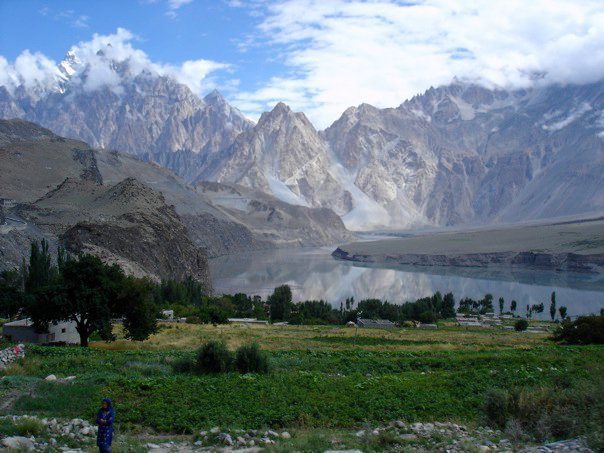
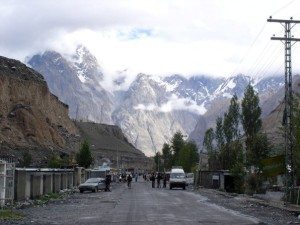
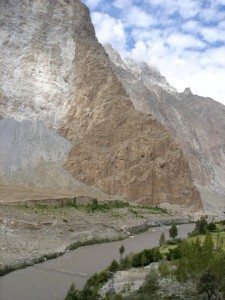
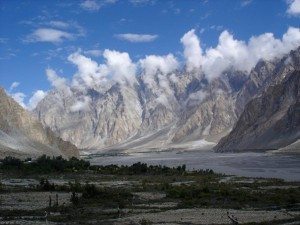
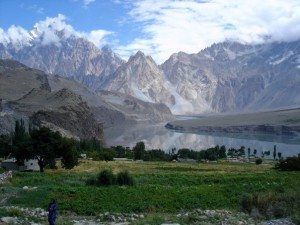
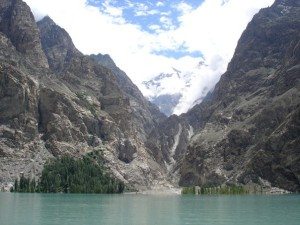
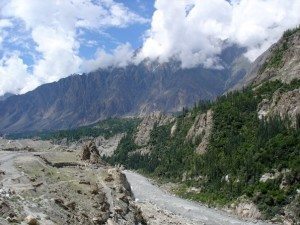
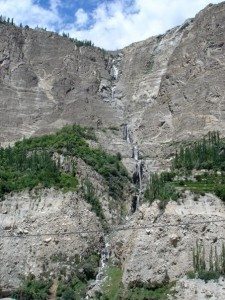
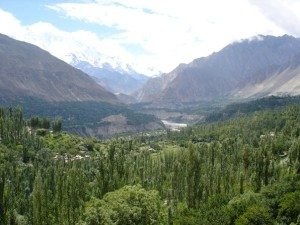

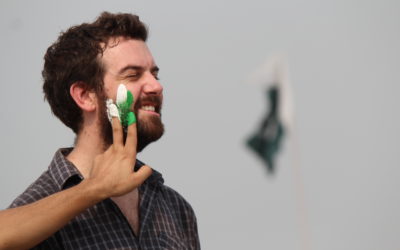


Tim, I myself being a Pakistani never knew about all of this. I am glad that there is much to rejoice about our beautiful Pakistan being explored by foreigners as well. While you are part of Pakistan as well, I would say it is an excellent exploration and effort to get to know about the unknown.
Regards:
M. JUNAID ASLAM
Hi Junaid, thanks for reading! Pakistan is such a beautiful country, and has so much to offer – stay tuned, as we have more news and writing about Pakistan coming up in the next couple of weeks!
Lots of really detailed info here Tim, nice work! Pakistan is always thought of as being a very dangerous country for travellers to go to…and it’s true for some of the cities/roads in the country. Thanks for showcasing a (at the time) non-terrorist spot to travel through. It’s beautiful.
Cheers!
Thanks for reading, and I hope one day Pakistan sorts itself out and manages to shed its bad reputation. It’s a truly beautiful country, and if ever you (or anyone) is thinking of travelling there, please drop me a line! I’d love to swap ideas 🙂
Sir you write a very detailed & informative article on Sost & Passu.
You cover all the essential topics which a traveller needs to know about. After reading this, anyone can easily be crazed to visit that place.
Thanks for reading, Abdul 🙂 I hope you can go there one day 🙂